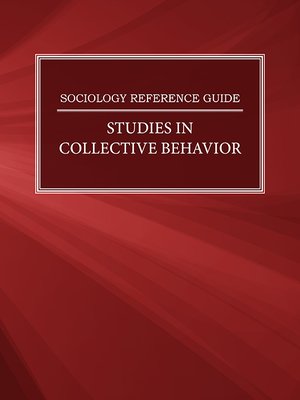
Sign up to save your library
With an OverDrive account, you can save your favorite libraries for at-a-glance information about availability. Find out more about OverDrive accounts.
Find this title in Libby, the library reading app by OverDrive.



Search for a digital library with this title
Title found at these libraries:
| Library Name | Distance |
|---|---|
| Loading... |
The relationship between individual and collective behavior was perhaps first examined by Émile Durkheim, a scholar
of social order and integration who theorized a “collective conscience” of beliefs and sentiments universal to a people
in society. In the first essay of this volume, Alexandra Howson updates the continuing influence of Durkheim’s theories
in the study of social arrangements and collective actions. Collective behavior exhibits, in universal or local
contexts, conditions specific to the collective. In other words, individuals may act quite differently as a social organism.
The following three essays introduce early theories on the formation of crowd dynamics, such as the contagion,
convergence, and emergent norm theories. Richard Savage reviews contagion theory, which emerged in the late-nineteenth-
century to explain how emotions and actions displayed by individuals in groups can become “contagious” and
spread to other members. In the latter period of the twentieth century, this dynamic was employed to explain a variety
of social phenomena from fashion fads to political protests. Convergence theory, as Jonathan Christiansen explains,
reveals how certain character traits magnetize like-minded individuals to form groups. Lastly, emergent norm theory
responds to the limits of the convergence theory and defines crowd behavior—rather than a violation of a dominant
norm—as the construction of an emergent norm appropriate to the “changing and often chaotic situations of collective
behavior episodes.” The research in “collective memory” represents the most recent interdisciplinary developments in
the field. The most concrete examples are found in the creation of monuments and memorials, which serve as objects
around which memories are solidified.







